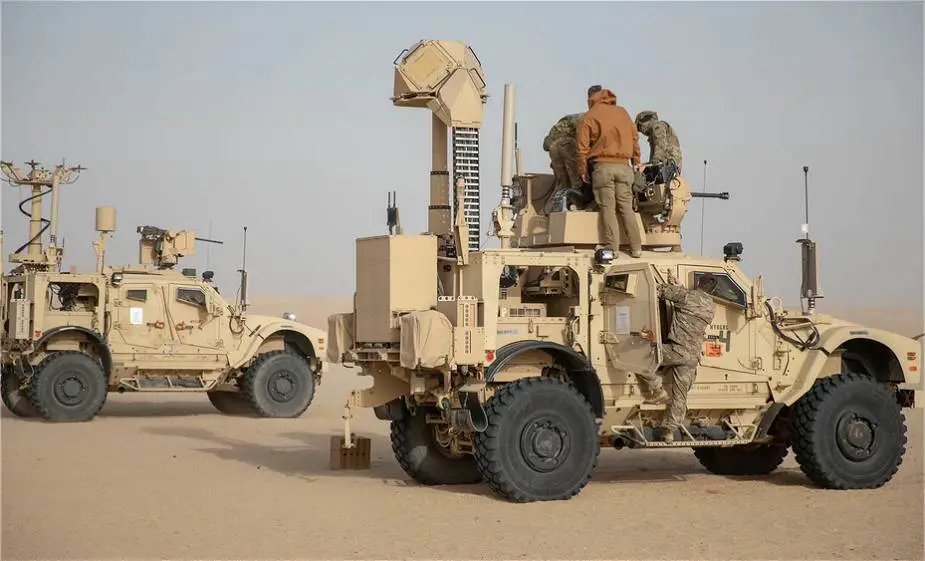Breaking news
US soldiers conduct operational deployment of M-LIDS counter-drone weapon system in Kuwait.
According to pictures released by the United States Department of Defense, U.S. soldiers have conducted a military training exercise in Kuwait at the end of January 2022 using the M-LIDS counter UAS (Unmanned Aerial System) weapon system mounted on an M-ATV 4x4 armored vehicle.
Follow Army Recognition on Google News at this link

U.S. Soldiers with the 1st Stryker Battalion, 4th Infantry Division, conduct Mobile Low, Slow, Small Unmanned Aerial Vehicle Integrated Defense System (M-LIDS) training, Camp Buehring, Kuwait, Jan. 25, 2022. (Picture source U.S. DoD)
Citing information from the United States Department of Defense, U.S. Soldiers with the 1st Stryker Battalion, 4th Infantry Division, conduct Mobile Low, Slow, Small Unmanned Aerial Vehicle Integrated Defense System (M-LIDS) training at Camp Buehring in Kuwait on January 25, 2022.
The M-LIDS is a counter-drone weapon system, which can be mounted on vehicles and is designed to target and disable, or destroy hostile drones or other unmanned aerial vehicles. The system is deployed in support of the Combined Joint Task Force - Operation Inherent Resolve advises, assist, and enable mission.
Operation Inherent Resolve (OIR) is the U.S. military's operational name for the International military intervention against ISIL (Islamic State in Iraq and the Levant), including both a campaign in Iraq and a campaign in Syria, with a closely-related campaign in Libya.
Drone attacks are now a real threat and are increasingly used by terrorist groups because it is very cheap, easy to deploy, difficult to detect, and extremely effective. In January 2022, drones were used to target the Baghdad airport. The United Arab Emirates has been hit by several drones over the past few weeks amid an escalation of the conflict in Yemen.
Unmanned aircraft systems (UAS), commonly called drones, have proliferated rapidly and are available to nation-states and to non-state actors and individuals. These systems could provide U.S. adversaries with a low-cost means of conducting intelligence, surveillance, and reconnaissance missions against—or attacking—U.S. forces. Furthermore, much smaller UASs cannot be detected by traditional air defense systems due to their size, construction material, and flight altitude. As a result, in FY2022, the U.S. Department of Defense (DOD) plans to spend at least $636 million on counter-UAS (C-UAS) research and development and at least $75 million on C-UAS procurement, this represents a $134 million overall increase from FY2021.
In the U.S. Army, the M-LIDS is deployed on two M-ATV 4x4 armored vehicles. The first vehicle is used to detect and track UAS threats using a combination of sensors, and the other that employs a variety of electronic and kinetic solutions, including a 30mm cannon and the Coyote small killer drone, to either jam the control signals of the small UAS or kill it. Another vehicle-mounted system deployed by the U.S. Army, but one that uses only electronic warfare means to counter a small UAS, is called Silent Archer.
For more information about the M-LIDS counter-drone weapon system, CLICK THIS LINK.





























